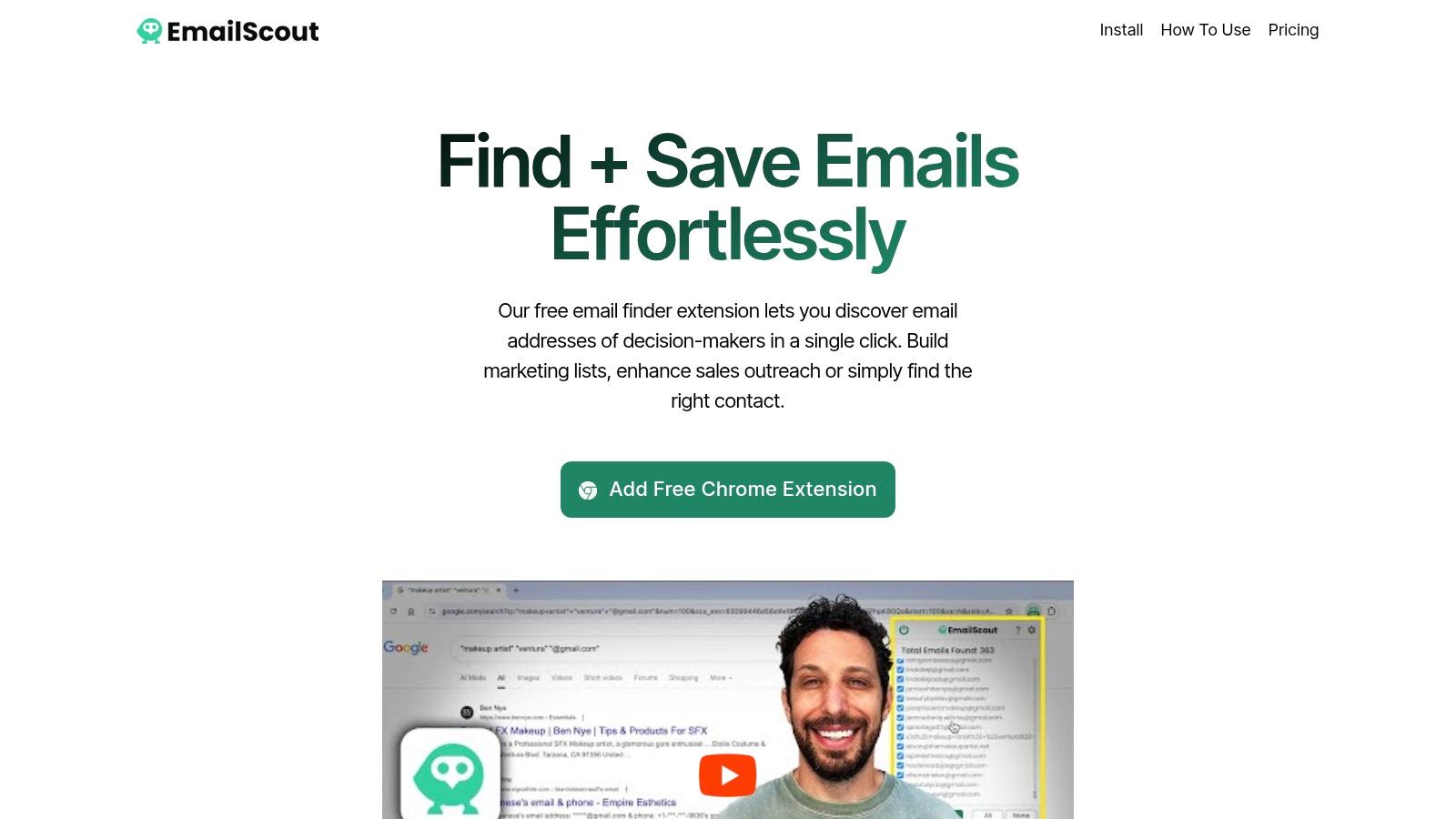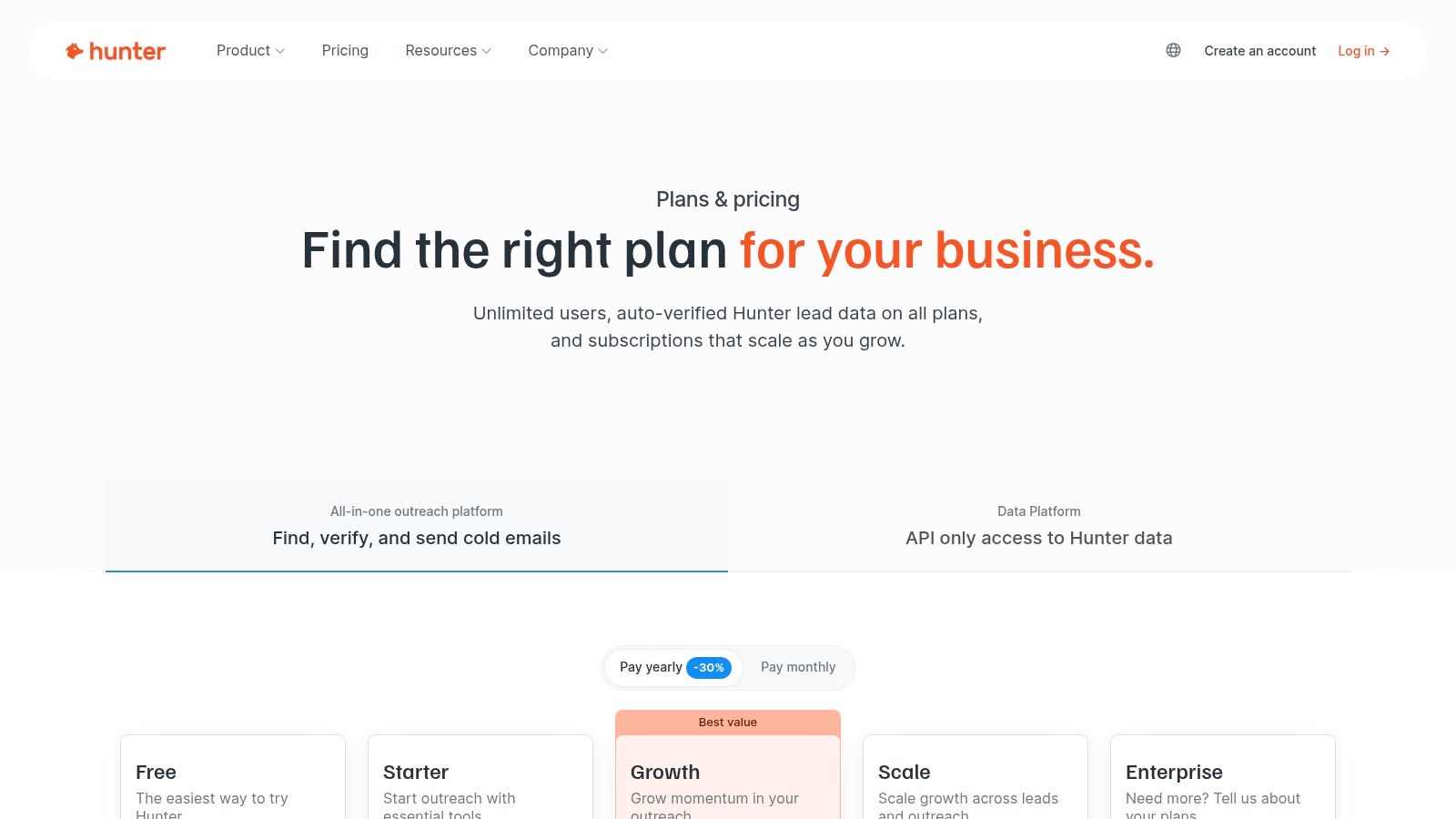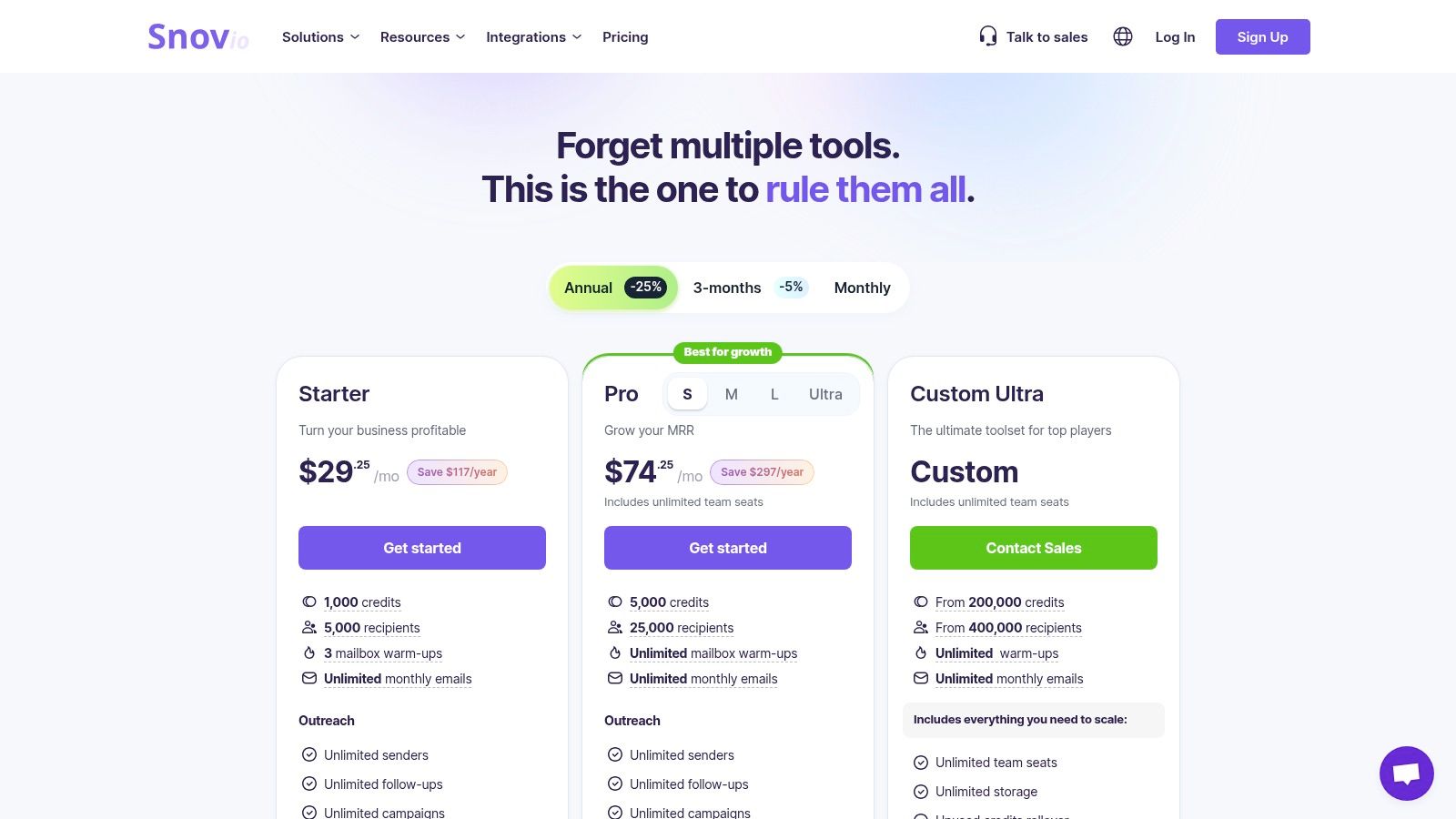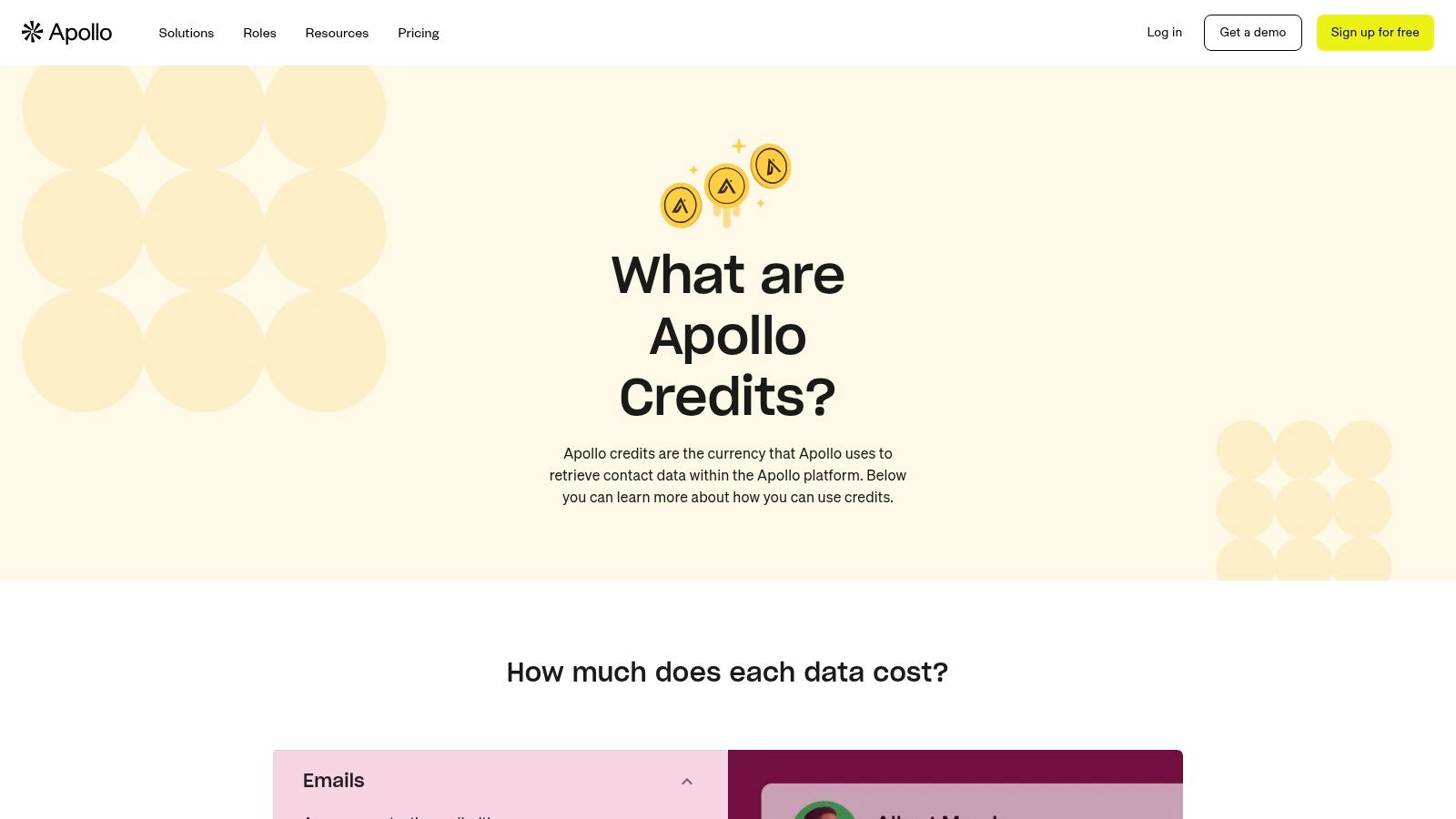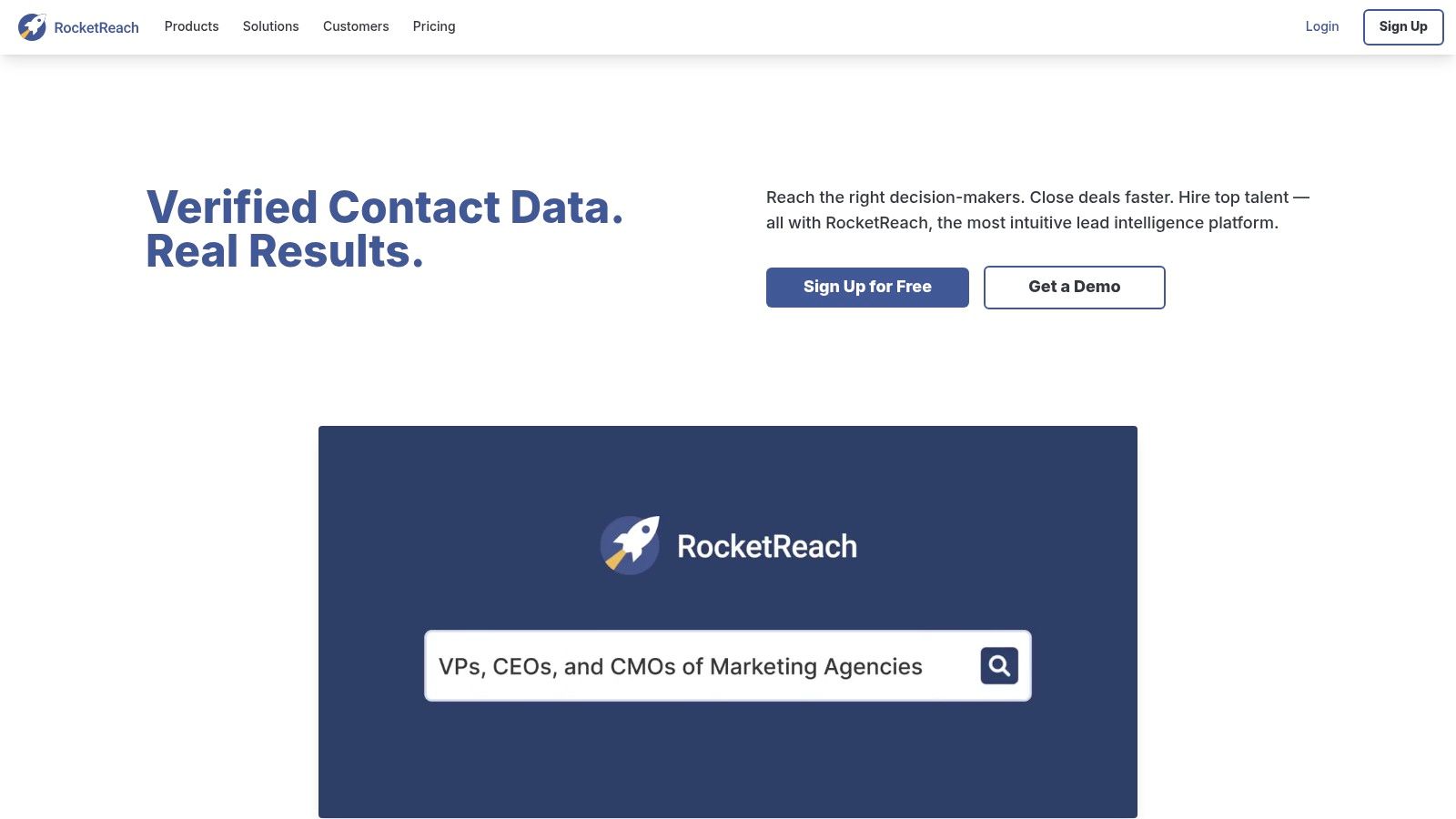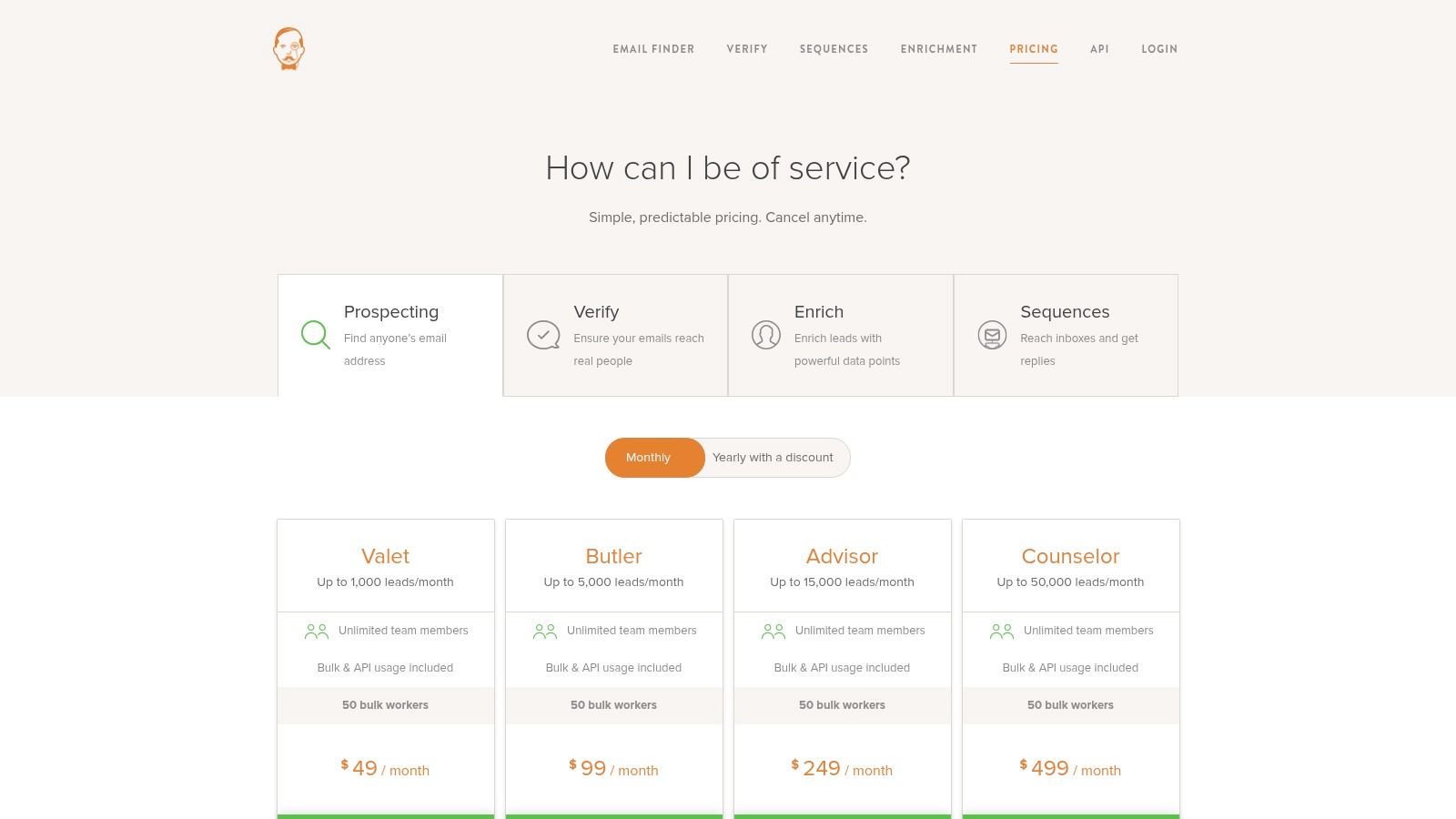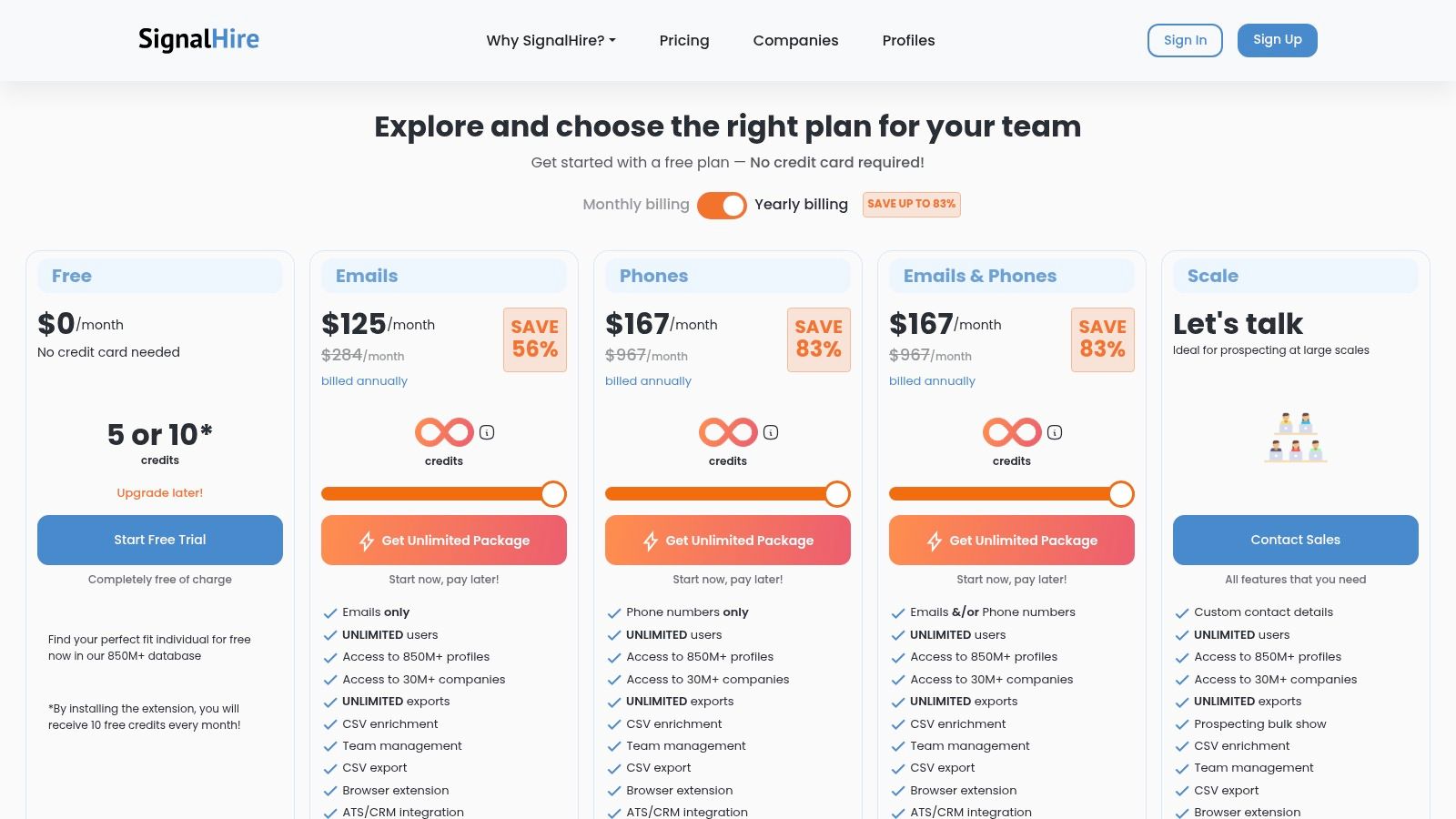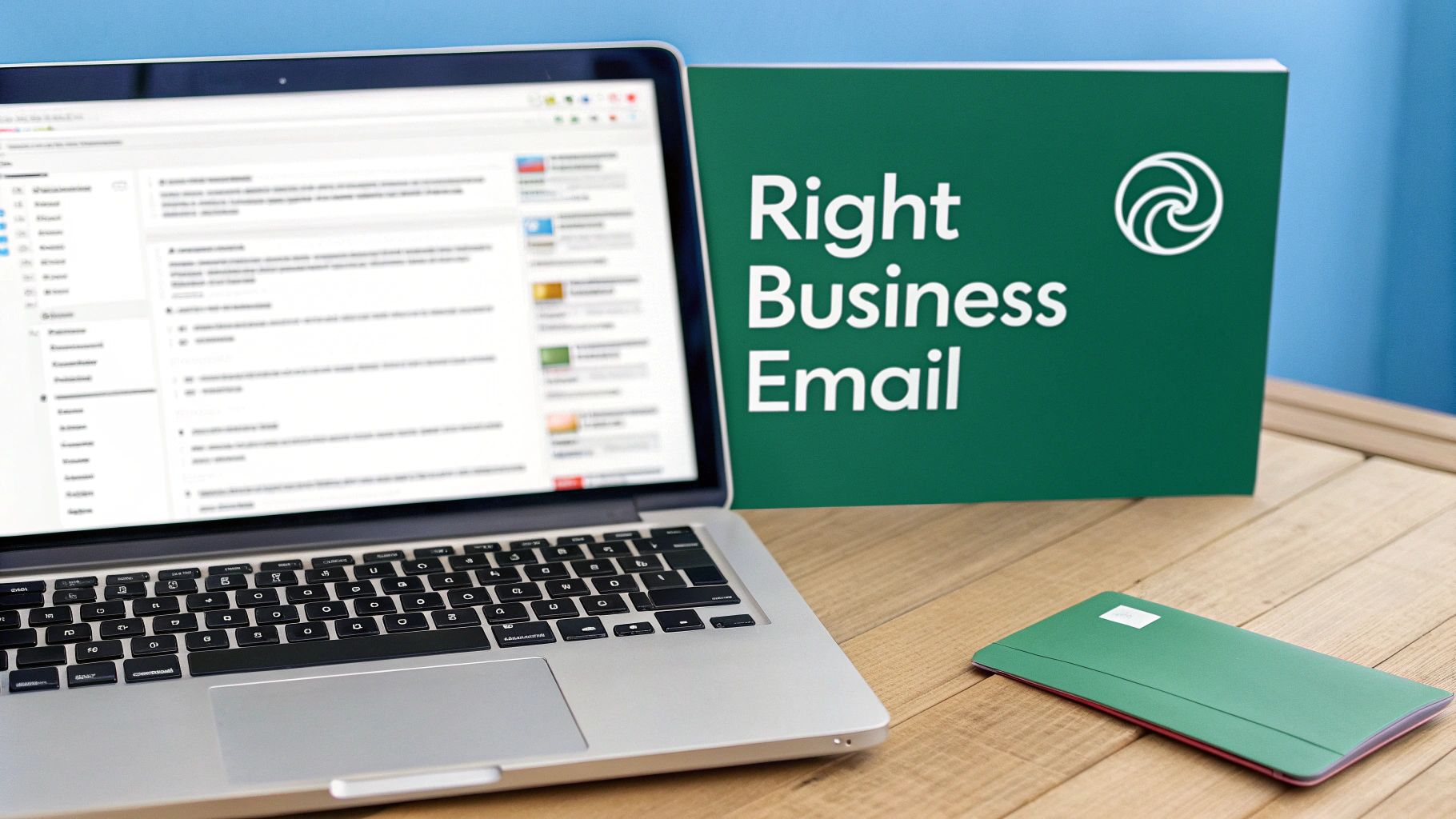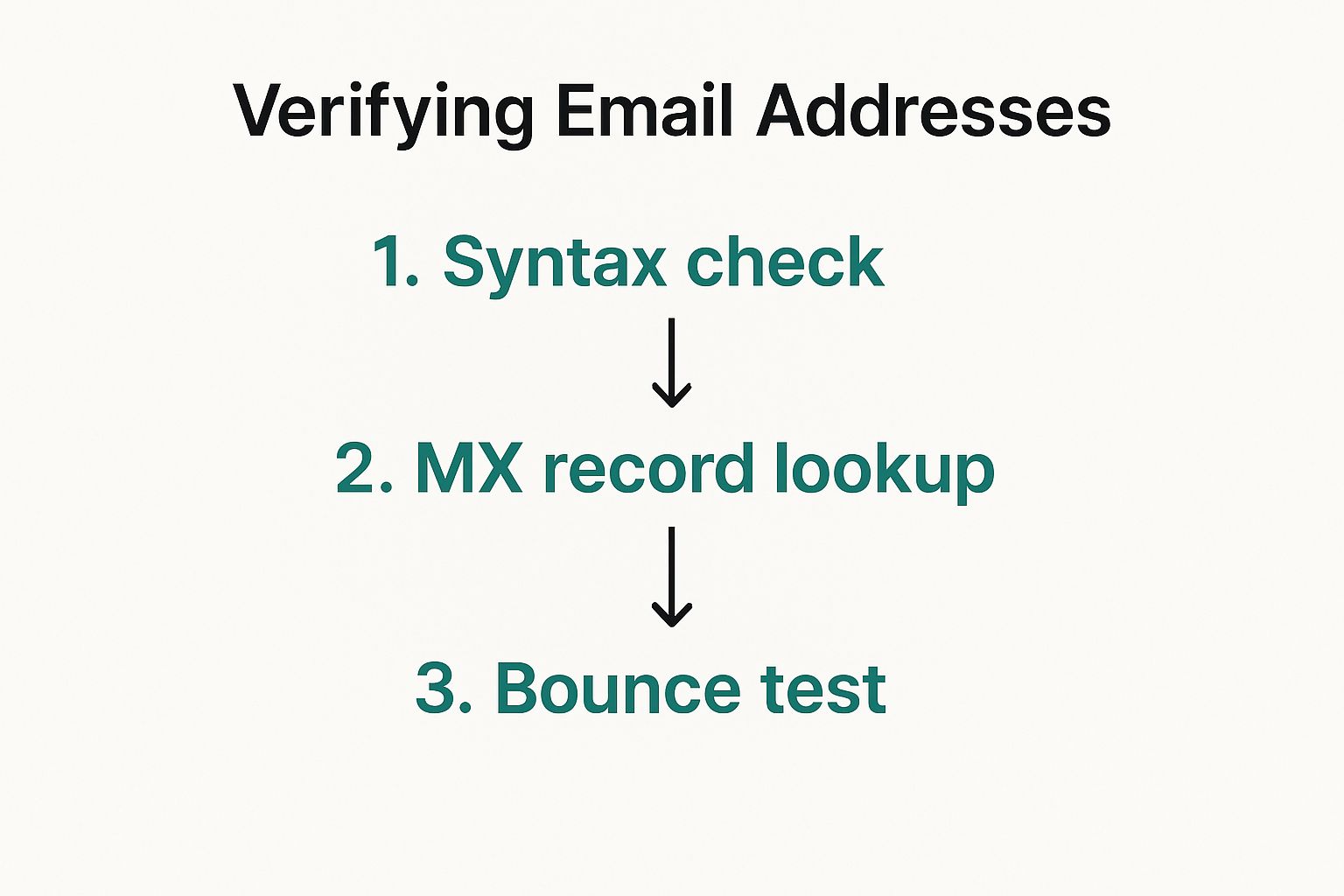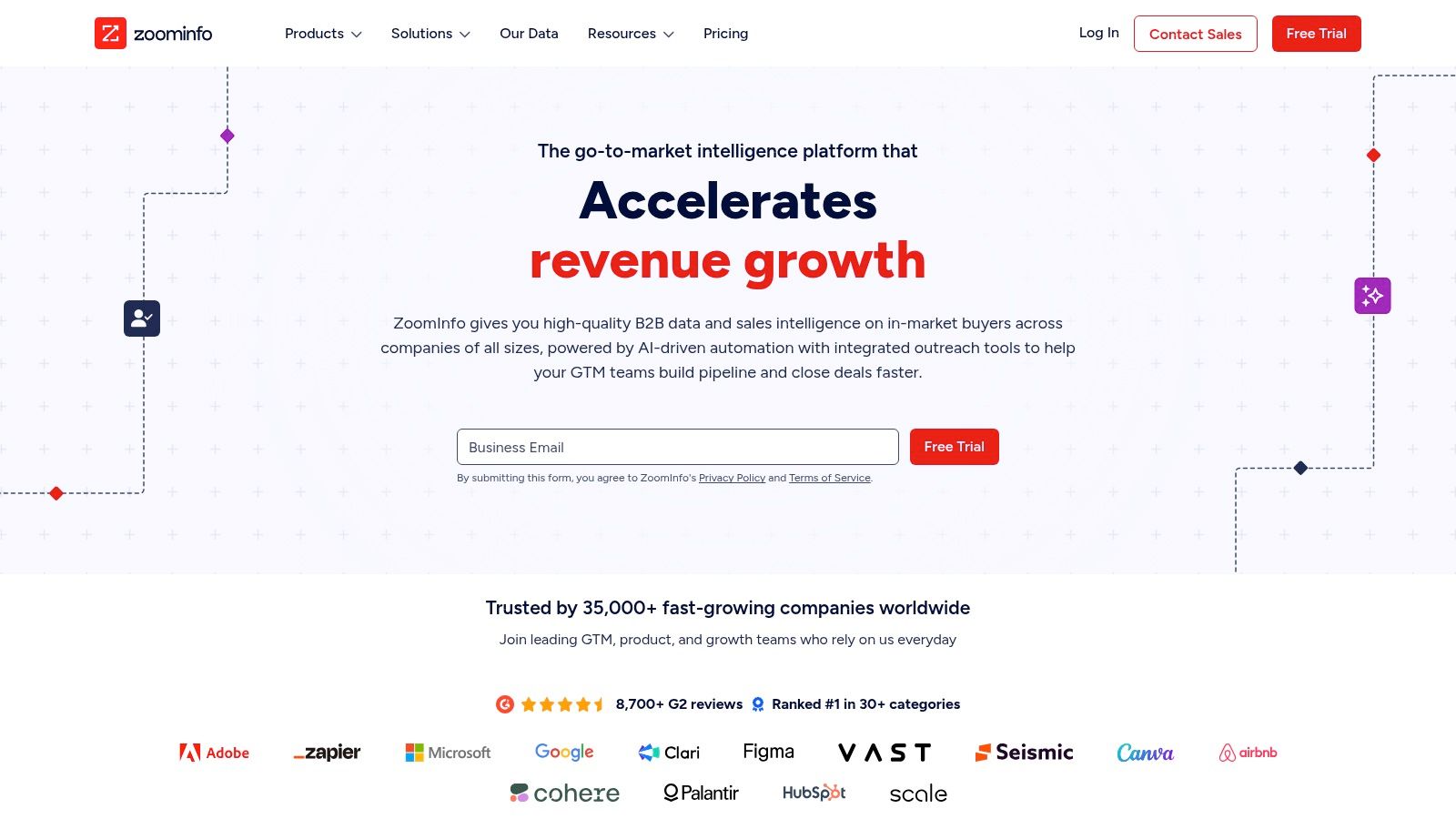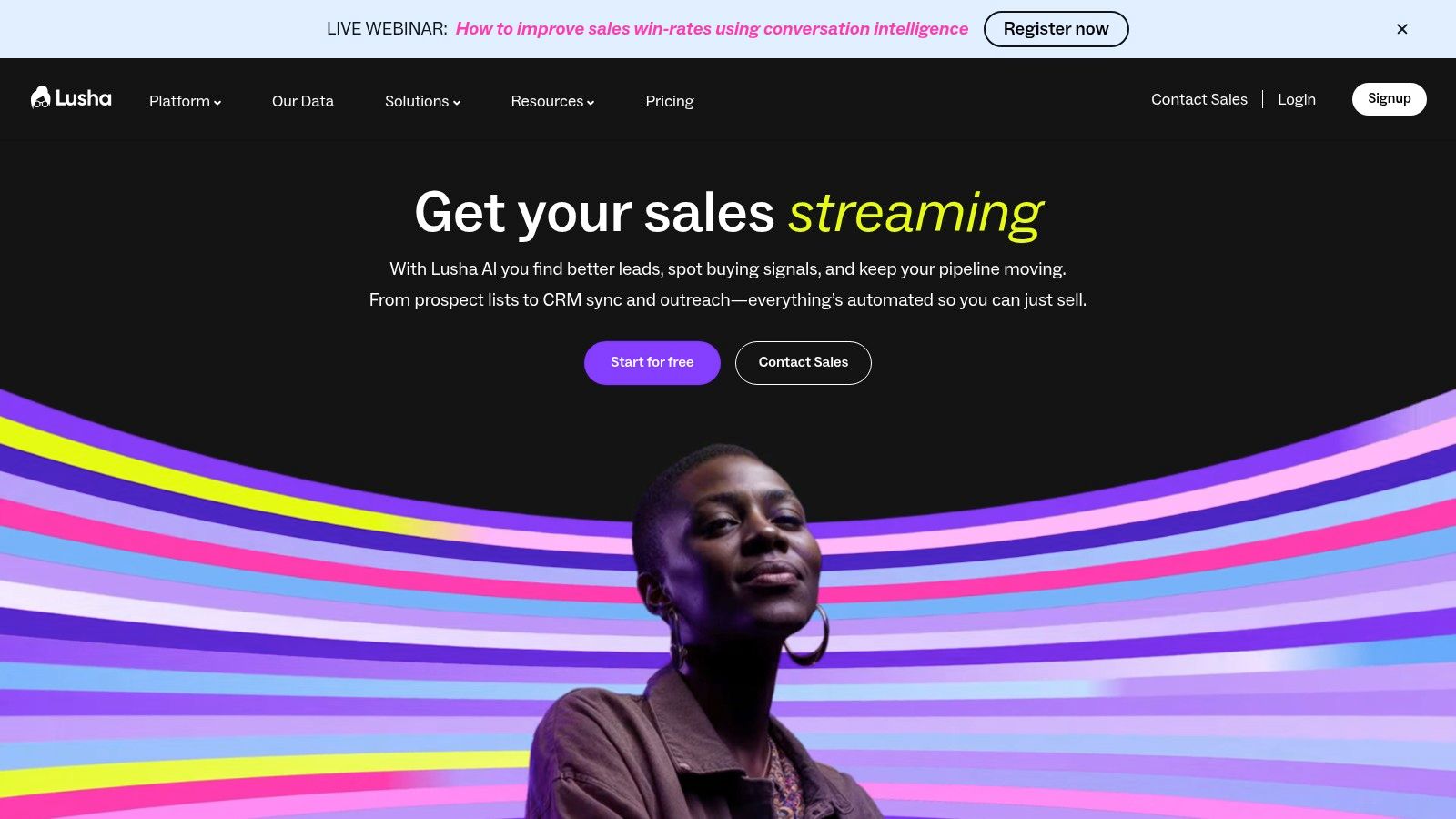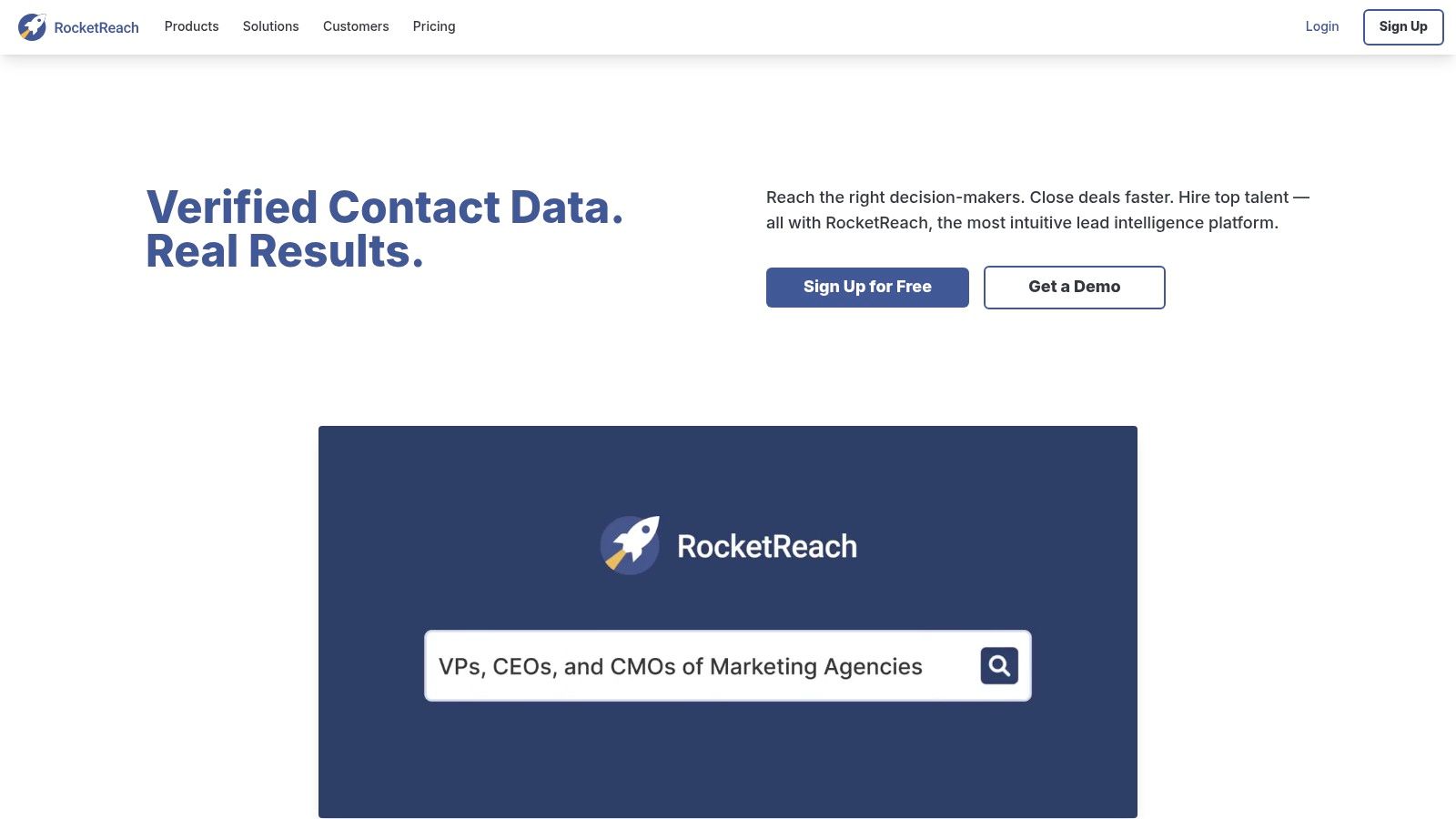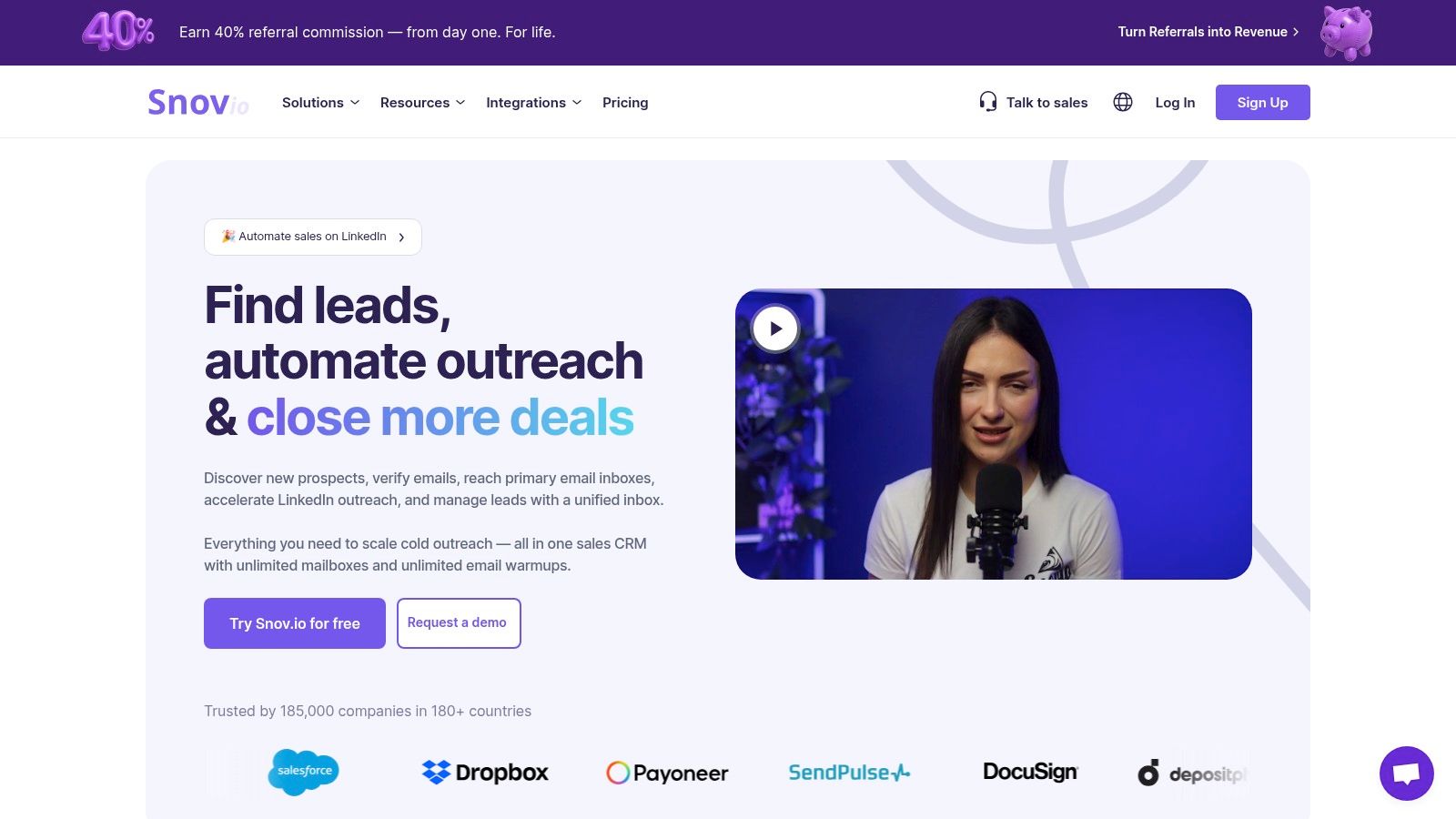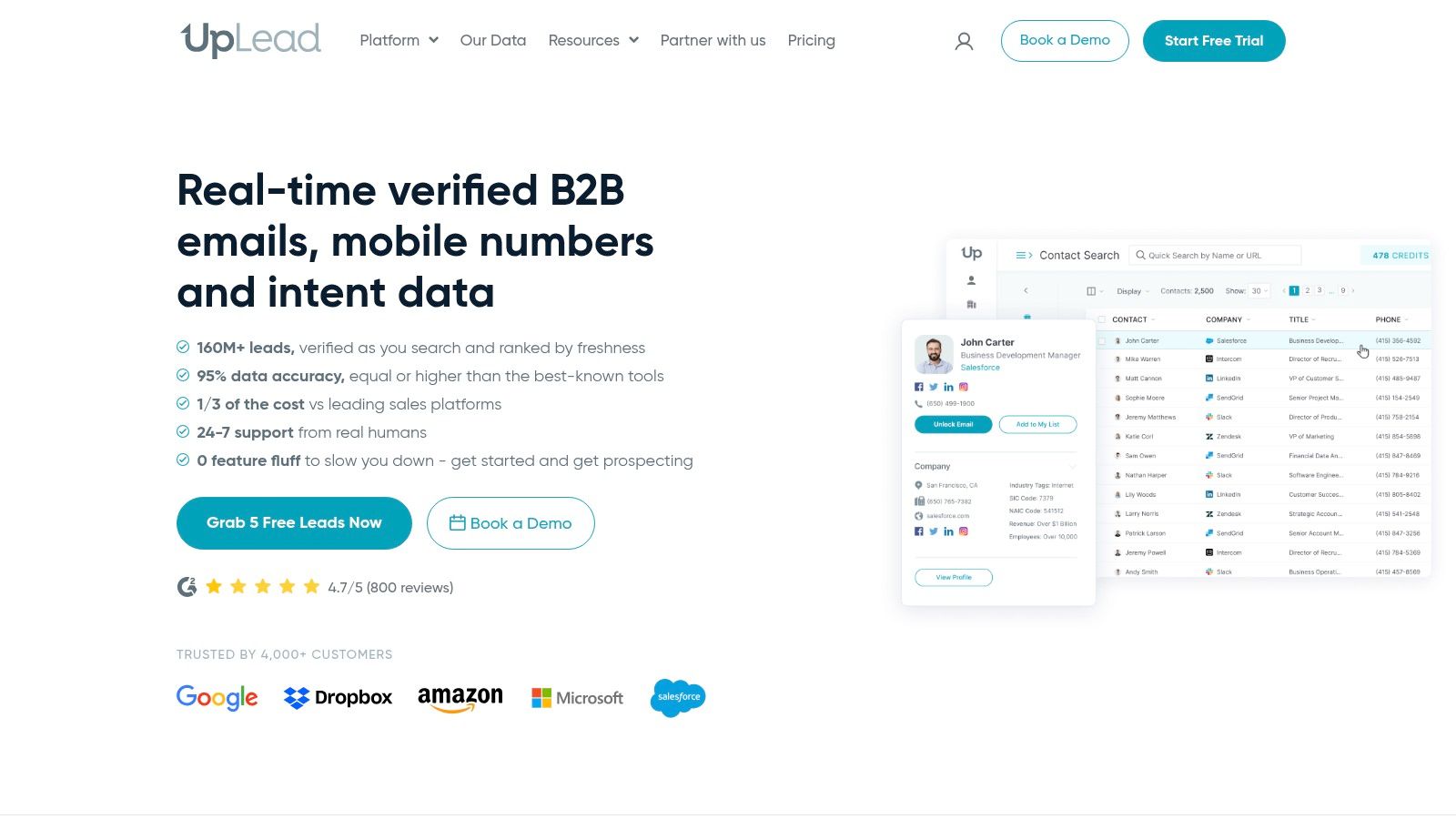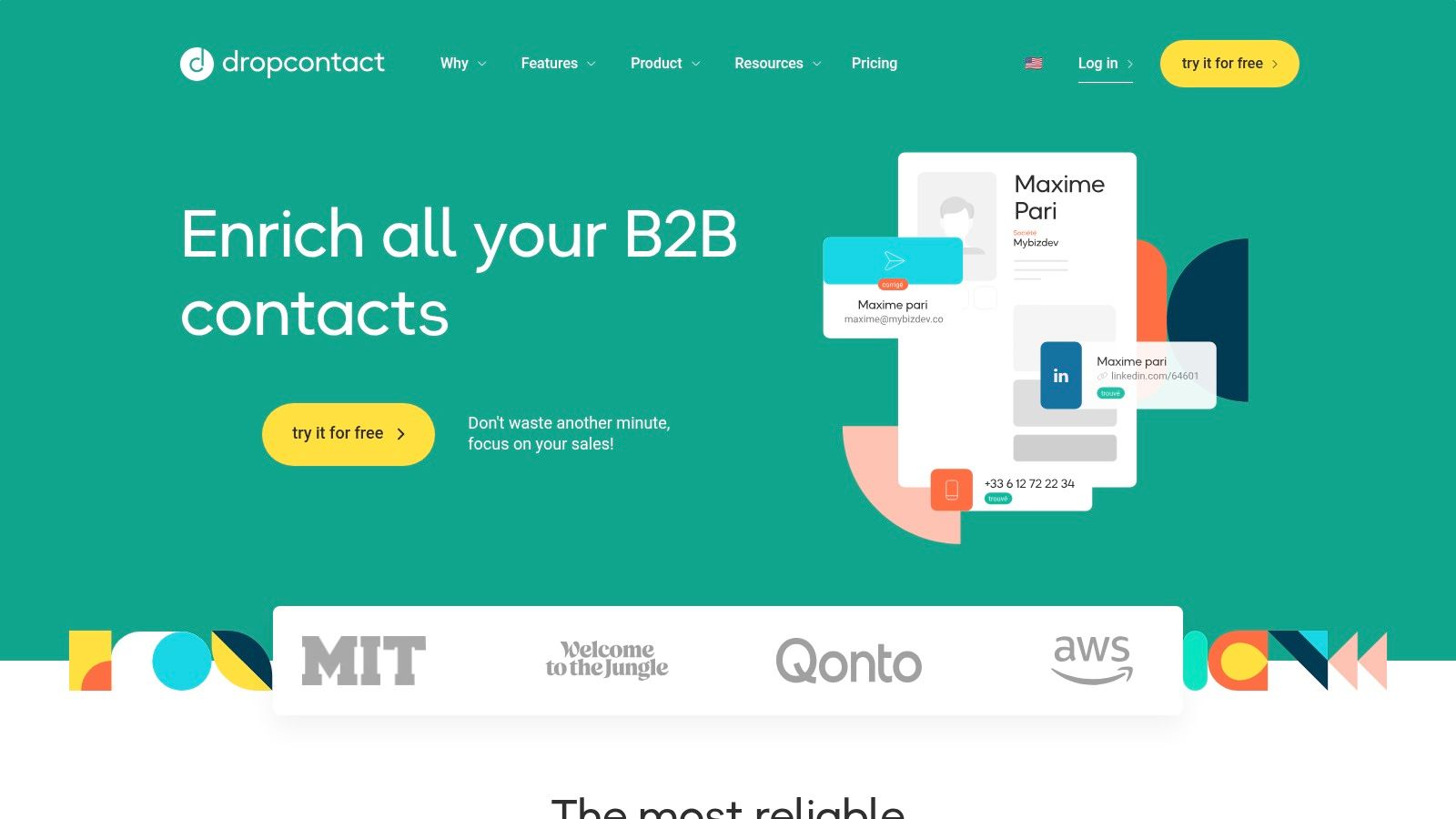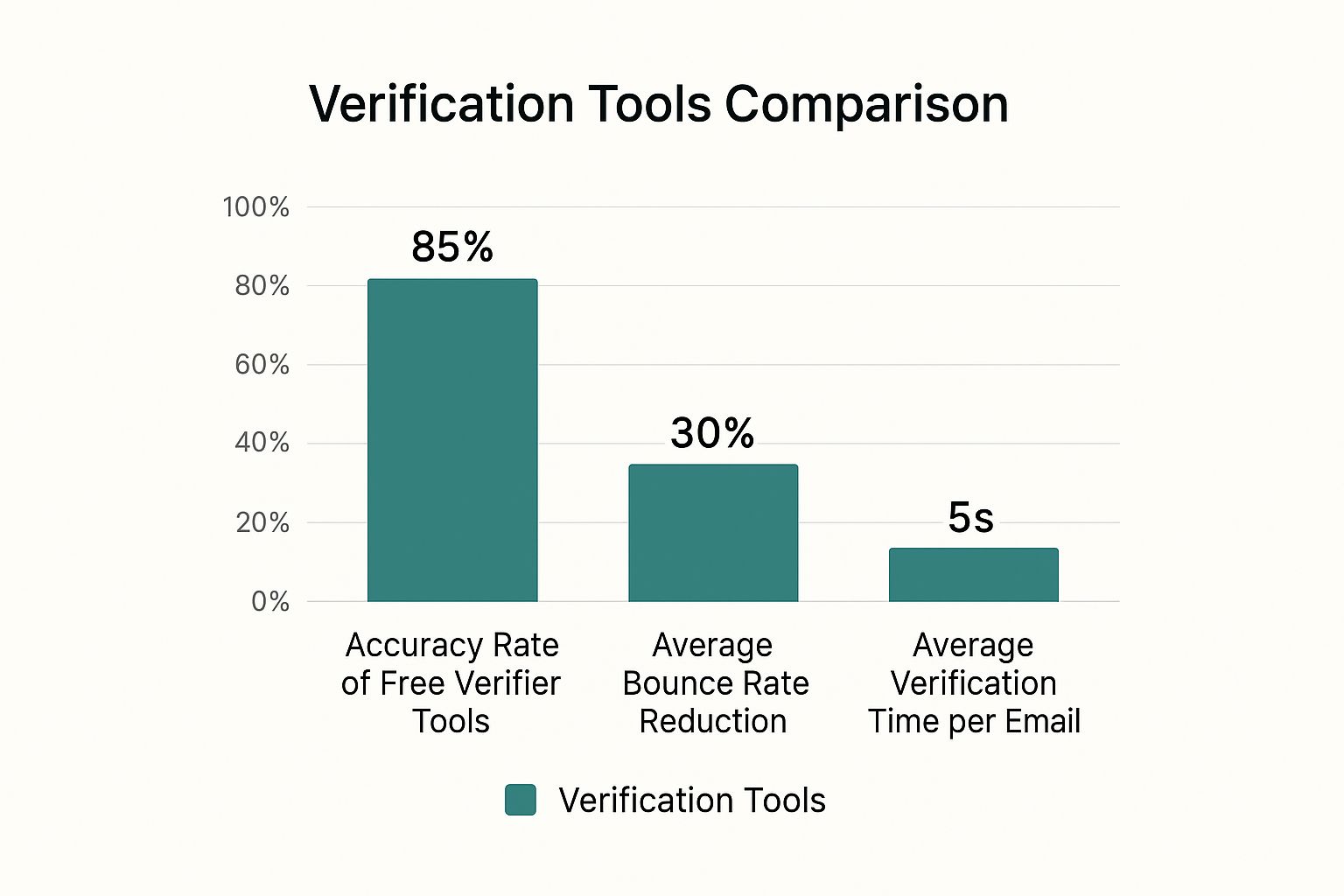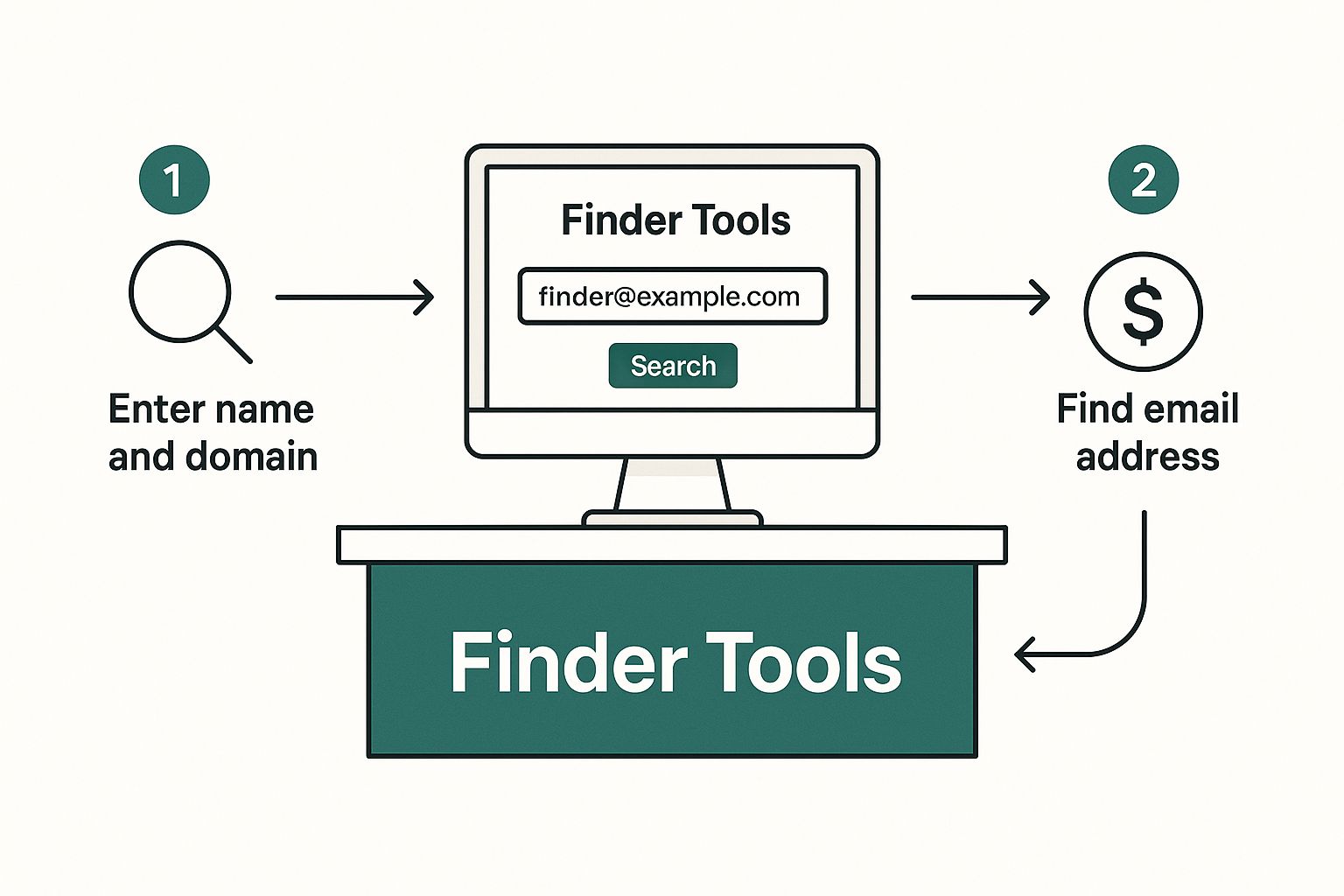Before we get into the how, let's talk about why LinkedIn is the best place to start your search for an email address. It's more than just another social network—it’s a massive, self-updating professional directory. That’s what makes it the most reliable source for accurate contact information.
This foundation of trust and professional context is exactly what makes your outreach more likely to succeed right from the get-go.
Why LinkedIn Is the Gold Standard for Contact Discovery
Forget about those stale, outdated contact lists you buy that are useless within a few months. LinkedIn works because of one simple, powerful idea: people keep their own profiles current.
Professionals have a real incentive to update their job titles, companies, and accomplishments. This self-service approach creates a living, breathing database that static resources just can't compete with.
The professional context is the other huge advantage here. When you find an email through LinkedIn, your outreach feels less like a cold interruption and more like a relevant business conversation. You're connecting inside a professional world, which immediately adds a layer of credibility to your message.
The Power of a Living Database
Seriously, think about the last time you bought a contact list. How much of it was just plain wrong? The magic of LinkedIn is that it's always changing, driven by its billion-plus members around the globe. People announce promotions, switch jobs, and update their skills in real-time.
This means the data you find is far more likely to be fresh and actionable. It's why so many pros live on the platform. In fact, 40% of B2B marketers say LinkedIn is their single most effective channel for finding quality leads. It’s proven its worth time and time again.
Just take a look at the sheer scale of the professional community you're tapping into.
This graphic really drives home the point: LinkedIn is an massive, active community, making it an unmatched resource for finding contacts and networking.
Building Credibility Before You Even Connect
Your LinkedIn profile is your digital handshake. To really make this work, you need to look the part. A quick way to boost your professional image is by using some quality AI generated headshots for LinkedIn. When your own profile looks solid, your connection requests and emails just feel more legitimate.
Key Takeaway: LinkedIn's value isn't just the data it holds, but the context it provides. A great profile combined with info you've gathered from the platform is a powerful recipe for outreach that actually gets a response.
By starting your search on LinkedIn, you're not just grabbing an email address. You're gathering the intel needed to build a real connection. And if you want to do this at scale, our guide on how to scrape thousands of LinkedIn contacts from Google Search shows you some advanced tricks to build your lists fast.
Using Email Finders to Streamline Your Search
Let’s be honest, the manual tricks are useful in a pinch, but they just don’t scale. When you need to find emails for dozens—or even hundreds—of prospects, you need a real system. This is exactly where dedicated email finder tools come in, turning a mind-numbing task into a quick, efficient process.
Most of these tools work as browser extensions that plug directly into your workflow. They let you find an email from LinkedIn with a single click, right from a person's profile page. No more guessing email patterns or digging through obscure contact pages. You just get instant access to verified contact information.
This approach is all about closing the gap between finding a promising lead and actually starting a conversation.

As you can see, the right tech makes the whole sequence faster and far more effective.
How Email Finder Extensions Work
Most of the top-tier email finders, like Hunter or Skrapp, operate as simple Chrome extensions. Once you install one, it adds a small button or widget to LinkedIn profiles. When you land on a prospect’s page, the tool cross-references their name, company, and other public data against a massive database to pull up their professional email address.
But the best tools don't just find emails; they verify them. You’ll often see a little green checkmark or a confidence score next to the email. This one simple feature saves you from the frustration of bounced emails and helps protect your sender's reputation. It's a small detail that makes a huge difference.
Imagine you’re a sales rep targeting marketing managers at SaaS companies. You can just visit a target's profile, click the extension's icon, and instantly see their verified firstname.lastname@company.com address. The whole thing takes less than 10 seconds per profile.
Scaling Up Your Search with Bulk Finders
Finding a single email is great, but the real power comes from extracting contacts in bulk. This is where combining an email finder with LinkedIn Sales Navigator becomes a total game-changer for anyone serious about outreach.
Sales Navigator is brilliant for building hyper-targeted lead lists based on criteria like industry, company size, job title, and location. Once you have a curated list of, say, 100 ideal prospects, you can use an email finder to enrich that entire list at once.
Instead of clicking through profiles one by one, you can run a process that pulls verified emails for your entire search result. What used to take a full day of manual work can now be done in just a few minutes.
This workflow is the secret behind highly efficient sales and marketing teams. They spend their time building targeted lists and crafting great messages, not hunting for contact details. It's how they're able to connect with hundreds of relevant leads every single week.
Choosing the Right Tool for Your Needs
Not all email finders are created equal. Some are designed for freelancers with occasional needs, while others are built for enterprise teams running massive campaigns.
When you’re looking at your options, here are a few things to consider:
- Accuracy and Verification: How good is the data? A tool with a high bounce rate is worse than no tool at all. Always look for services that provide real-time verification.
- Integration: Does it play nice with LinkedIn and Sales Navigator? A smooth workflow is non-negotiable for efficiency.
- Bulk Capabilities: Can you extract emails from entire lists or just individual profiles? This is the key to scaling your efforts.
- Credit System and Cost: Most tools run on a credit basis, where one credit usually equals one found email. Make sure you understand the pricing model and that it lines up with how much outreach you plan to do.
Many tools offer a free tier, which is perfect for getting started and finding a handful of emails each month. To dive deeper, you can check out our list of the best free email finder tools to see which one fits your budget and goals. Ultimately, the best tool is the one that saves you the most time while delivering the most accurate data.
Clever Manual Tricks to Find Any Email for Free
While automated tools are fantastic for speed, knowing how to manually hunt down an email from LinkedIn is a priceless skill. It's the backup plan that almost always works, letting you find nearly anyone's contact details without spending a dime. These are the crafty, no-cost techniques that seasoned pros rely on every single day.
It all starts with the most obvious—and most overlooked—step.

Check the Contact Info Section
Before you dive into any complex detective work, do the simple thing first. Go to your prospect’s LinkedIn profile and click the "Contact info" link right under their name and headline.
You'd be surprised how many professionals list their work or even personal email address publicly here. It won't work every time, as many users keep this private, but it literally takes two seconds to check. When it does pay off, it's the fastest free method there is.
Master the Educated Guess
If the contact info section comes up empty, your next play is to make an educated guess. Most companies use a standard format for their employee emails, so your job is to figure out their pattern.
To pull this off, you just need two things:
- The prospect’s first and last name.
- Their company’s domain name (like
company.com).
With those two pieces of info, you can start testing the most common formats. Let's say you're looking for "Jane Doe" at "Acme Corp" (acme.com). The likely combinations would be:
- First Initial + Last Name:
jdoe@acme.com - First Name . Last Name:
jane.doe@acme.com - First Name Only:
jane@acme.com - First Name + Last Initial:
janed@acme.com - Full Name:
janedoe@acme.com
This approach turns the search into a simple logic puzzle instead of a wild goose chase. Once you have a few good guesses, the next step is to see which one is the real deal.
Pro Tip: Whatever you do, don't just blast an email to every possible address. That’s a surefire way to get a high bounce rate, which can seriously damage your sender reputation. Instead, use a free tool to verify your guesses first.
Use Free Tools for Validation
Several free online tools let you check if an email address is valid without actually sending a message. Services like MailTester or the free verifier from Hunter.io are perfect for this.
Just plug your best guesses in one by one. The tool will ping the server and give you a status, usually a green light for a valid address. This validation step is what turns your guess into a confirmed, deliverable contact.
This simple, two-step process of guessing and then verifying is one of the most reliable ways to find an email from LinkedIn for free.
And don't forget to look for a personal website or blog linked in their bio. Many consultants, freelancers, and industry leaders link to their personal projects, which almost always have a contact page with a direct email. It's an often-missed goldmine of information.
Tool-Based vs Manual Email Finding Methods
Deciding whether to use an automated tool or stick with manual techniques often comes down to your specific needs—are you looking for one specific contact or trying to build a list of hundreds? Here’s a quick breakdown to help you choose the right approach.
| Method | Best For | Speed & Scalability | Cost | Accuracy |
|---|---|---|---|---|
| Tool-Based | Bulk email finding, lead generation at scale, and fast results. | Very high. Can find hundreds of emails in minutes. | Typically requires a paid subscription for full features. | High, with built-in verification, but not always 100%. |
| Manual | Finding a few key contacts, zero-budget outreach, or as a backup. | Slow. Best for one-off searches. | Completely free (just your time). | Can be very high if you verify your guesses properly. |
While tools offer undeniable efficiency, manual methods give you complete control and cost nothing but your time. The best prospectors know how to use both, switching between automation for scale and manual digging for those hard-to-find, high-value contacts.
Crafting Outreach That Actually Gets a Reply
https://www.youtube.com/embed/D9R9YAsjd_A
Finding someone’s email on LinkedIn is a great start, but it's only half the battle. Your next move—the outreach itself—is what truly determines whether you build a real connection or just get ignored. This is where you shift from simply finding a contact to starting a meaningful conversation.
The key is to ditch the generic, templated messages completely. An email that kicks off with "Dear Sir/Madam" or some vague compliment is destined for the trash folder. Your goal is to show you’ve actually done your homework with thoughtful, genuine personalization.
Personalization Is Non-Negotiable
Real personalization goes way beyond just slotting a name into a template. It’s about referencing specific details you found right there on their LinkedIn profile. This simple act proves you’re not just blasting out a hundred identical emails.
Here are a few powerful personalization points to look for:
- Shared Connections: "I saw we're both connected with Sarah Smith from the marketing world."
- Recent Posts or Articles: "I really enjoyed your recent post on the future of AI in sales."
- Company News: "Congratulations on your company's recent funding round I read about."
- A Past Role or Project: "I noticed you previously worked at XYZ Corp and led their impressive product launch."
This approach turns a cold email into a warm conversation starter. It immediately tells the recipient they aren't just another name on a massive list. In fact, adding a personalized message to a LinkedIn connection request can boost the reply rate to 9.36%, which is nearly double the 5.44% rate for requests with no message.
Writing an Effective Cold Email
Once you've got your personalization points, it's time to craft the message. Your outreach should always be respectful, concise, and focused on providing value, not just asking for something. If you're looking for a solid framework, our detailed guide on how to write cold emails that get responses breaks it all down.
Key Takeaway: The goal of your first message isn't to make a sale; it's to start a conversation. Offer a resource, share a relevant insight, or ask a thoughtful question related to their work.
If you’re using AI to help draft your messages, remember that the human touch is what gets replies. Incorporating practical tips to humanize AI content is essential for making sure your outreach actually connects with people.
Finally, always be mindful of privacy and legal compliance. Professional outreach has to respect regulations like GDPR and CAN-SPAM. This means being transparent about who you are, providing a clear way to opt out, and making sure your message is relevant to their professional role. Ethical outreach isn't just the right thing to do—it's also a lot more effective.
When to Message on LinkedIn Instead of Emailing

After all this talk about hunting down emails, here’s a slightly counterintuitive thought: sometimes, the best move is to not email them at all. At least, not at first.
Instead of digging for an address, your most effective first touchpoint can happen right inside LinkedIn. It's a subtle but powerful shift in strategy.
Think about it from their side. A cold email, even a really good one, often lands like an interruption from a total stranger. It’s just another message fighting for attention in an already overflowing inbox, wedged between internal memos, newsletters, and spam. A LinkedIn message, on the other hand, lives in a completely different world.
It feels less like an unsolicited pitch and more like a conversation between peers, simply because it’s happening within a professional network. That small psychological distinction can be a total game-changer, lowering their guard and opening the door for a real dialogue.
The Power of In-Platform Communication
The numbers don't lie. Recent data shows that LinkedIn outreach is blowing traditional email out of the water when it comes to engagement.
One study found that the average reply rate for cold emails is a pretty dismal 5.1%. Meanwhile, LinkedIn messaging hits a 10.3% reply rate—literally double the effectiveness. That's a massive advantage you can't afford to ignore. You can discover more insights about this outreach data and see how it's shaping modern sales.
Your message is far less likely to get buried in a spam filter and much more likely to be seen by the right person.
When you start the conversation on LinkedIn, you're not just sending words into the void. You're bringing the credibility of the entire network with you. Your profile, shared connections, and professional background are all right there, providing instant context and building a baseline of trust that a cold email just can't match.
Crafting Connection Requests That Actually Start Conversations
The real goal isn't just to add another connection; it's to kick off a dialogue that can grow into a business relationship. Often, this is what leads to them giving you their email address directly.
Sending a generic, empty connection request is the LinkedIn equivalent of an email with a blank subject line. It's lazy and easy to ignore.
To stand out, you absolutely have to add a personalized note. Keep it short, sweet, and focused on them. Here are a few quick ideas for what you can say:
- Mention a recent win: "Hi [Name], I saw your company was just featured in [Publication] for your work in [Industry Topic]. Really impressive stuff. I'd love to connect and follow what you're doing."
- Reference a shared interest: "Hello [Name], I noticed from your profile that you're also passionate about sustainable tech. It would be great to connect with a fellow enthusiast."
- Point to a mutual connection: "Hi [Name], I see we both know [Mutual Connection's Name]. I’m always keen to expand my network with other professionals in their circle."
This simple, personalized touch turns your request from a passive click into an active conversation starter. You're showing genuine interest and establishing common ground, which makes your next move—whether on LinkedIn or eventually over email—so much more likely to land.
Common Questions About Finding LinkedIn Emails
Even with the best tools, you're bound to have a few questions when you start pulling emails from LinkedIn. Getting a handle on the legal and practical sides of things is crucial for building an outreach strategy that actually works—and keeps you on the right side of the rules. Let's tackle some of the most common things people ask.
One of the first questions that always comes up is about the law. Is it even legal to find and use emails from public profiles? The short answer is yes, but only for legitimate business-to-business (B2B) communication.
That "yes" comes with a huge string attached: you must follow anti-spam laws like CAN-SPAM in the US and GDPR in Europe. This means your message has to be relevant to their profession, be upfront about who you are, and give them an easy way to opt out. No exceptions.
Is This Process Legal and Ethical?
The whole game is about targeted, professional outreach—not blasting out mass spam. When you find an email from someone's LinkedIn, the unwritten rule is that you'll use it to start a relevant business conversation.
If you start sending generic, unsolicited sales pitches, you're not just being ineffective; you're crossing a line, both ethically and legally.
The Golden Rule of Outreach: Always provide value and respect the recipient's time and inbox. If you wouldn't want to receive the email you're about to send, it's a giant red flag. Time to rethink your angle.
Your outreach needs to be based on genuine business interest. Think of it as a professional courtesy, not an invasion of their inbox.
How Accurate Are Email Finder Tools?
Another big question is about reliability. Can you actually trust these email finders? While no tool is going to give you a 100% perfect score, the top-tier services usually hit an accuracy rate somewhere between 85% and 98%.
They pull this off with some pretty smart algorithms and real-time verification checks that confirm an email address is live and deliverable before it even lands in your list.
Of course, accuracy can sometimes dip for profiles that don't have a lot of public info or for people working at smaller companies with funky email patterns. This is exactly why it’s so important to have a few manual tricks up your sleeve. If a tool comes up empty, a quick educated guess paired with a free validation tool can often get you the right address.
What's the Best Way to Make First Contact?
Finally, I get this one all the time: should you just ask for an email in your connection request or InMail? My advice is to play the long game. The most effective approach is to start with a personalized connection request that asks for nothing. Your only goal is to get that first-degree connection based on a shared interest, group, or professional background.
Once they accept, you can follow up with a real message. Save your InMails for the high-value contacts or people with locked-down profiles, since they're a limited resource. By building a little rapport first, you’ll be surprised how often people are happy to share their email with you directly.
Ready to stop guessing and start connecting? With EmailScout, you can find unlimited verified emails from LinkedIn profiles in a single click. Try EmailScout for free and streamline your outreach today!


